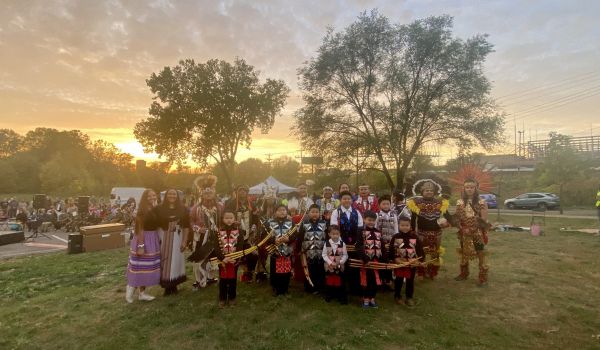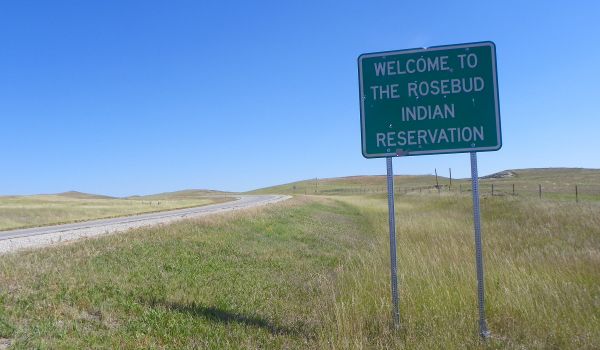American Indians lost over 90 million acres of tribal land as a result of the 1887 Dawes Act and other pieces of legislation that followed. The Indian Land Capital Company (ILCC) is a CDFI working to undo the effects of these damaging pieces of legislation. Their mission is to help Native nations gain jurisdiction over the 90 million acres of alienated tribal land in the U.S.
Created by the Indian Land Tenure Foundation in 2005 to bridge the lending gap for tribal communities, the ILCC functions a lot like a nonprofit. “The foundation has sworn that they will never take a dividend or any profits out of ILCC until all 90 million acres of alienated Indian land is back under Indian ownership,” says RJay Bunkrow, the CEO of ILCC.
“That pledge is gonna outlast us and our kids,” he adds. “That’s a serious pledge because we are a successful corporation. We have earnings in excess of a million dollars regularly.”
The ILCC helps finance land acquisitions and economic development to tribal communities that would otherwise struggle to access banking and financial services. The ILCCs entire portfolio consists of tribes that are underbanked.
Lack of access to capital is one of the biggest barriers to economic development for tribal communities. “There is just not enough money in Indian Country,” Bunkrow says. “It’s a constant battle to raise lending capital and to get new money into a tribal economy.”
The ILCC works as an “intermediary” between a tribe and outside financial institutions to bring more money into tribal communities.
“We use our strong lending history, balance sheet, and the rest of our financials, to convince institutions like banks and foundations to lend us money or to assist us in some way in getting more capital into Indian country,” says Bunkrow.
Part of the reason why banks may hesitate to work with tribal communities is because many are unfamiliar with how a sovereign nation’s finances function.
“When a bank takes a look at a tribe, they think, ‘okay, they’re a separate nation. How do we know if we lend them money there that we’re ever gonna get it back?’,” explains Bunkrow. “We’re in a unique position to give [other financial institutions] a little bit of comfort that they’re gonna get paid back with interest and that they won’t have any trouble collecting from us.”
Another barrier for communities located on tribal lands is that they cannot collect property tax on trust lands.
Tribal communities “tend to get a bad rap or going after money for economic development but the money is really replacing that tax base that cities or counties get, which we don’t,” explains Elizabeth Lincoln from Big Valley Band of Pomo Indians, located in California.
“The property people have here is in trust for themselves and their families,” adds Ben Ray, who works with Lincoln to oversee economic development on the Big Valley Rancheria.
They are currently using ILCC funding to develop a commercial center on the rancheria, which is the largest project the tribe has ever undertaken. It will have a gas station, convenience store, coffee shop, laundromat and car wash, a drive-through smoke shop and a Class II gaming facility.
The first time Ben Ray worked with the ILCC was shortly after he arrived at the Rancheria. “We had a balloon note that was due. We had to turn around a whole loan process within a week after me getting here.” The ILCC assisted in getting that balloon note paid off. “They were amazing. And then we subsequently sold that property.”
The ILCC’s continued success with tribes like the Big Valley Band of Pomo Indians shows that Native CDFIs have the unique opportunity to support tribal communities in a way that traditional financial institutions have failed to do so.
“We’ve seen a lot more Native CDFIs in the last five years,” notes Bunkrow. “That’s a great thing. I’m glad that Indian Country is taking the initiative to address the problem themselves. They know they can’t count on anyone else.”
“We respect their sovereignty, we will honor their sovereignty. They appreciate the way that we do business. And because of that, we have never had a tribe default on a loan.”

This story is part of our series, CDFI Futures, which explores the community development finance industry through the lenses of equity, public policy and inclusive community development. The series is generously supported by Partners for the Common Good. Sign up for PCG’s CapNexus newsletter at capnexus.org.

Bianca Gonzalez (she/they) is a writer intent on using words as a tool for social change. She is a solutions journalist for Next City, a case study writer for Community Solutions, and a daily news writer for Biometric Update. As a queer, Latina brain cancer survivor, she believes that justice is fundamentally intersectional.




_600_350_80_s_c1.jpg)


_600_350_80_s_c1.jpg)








